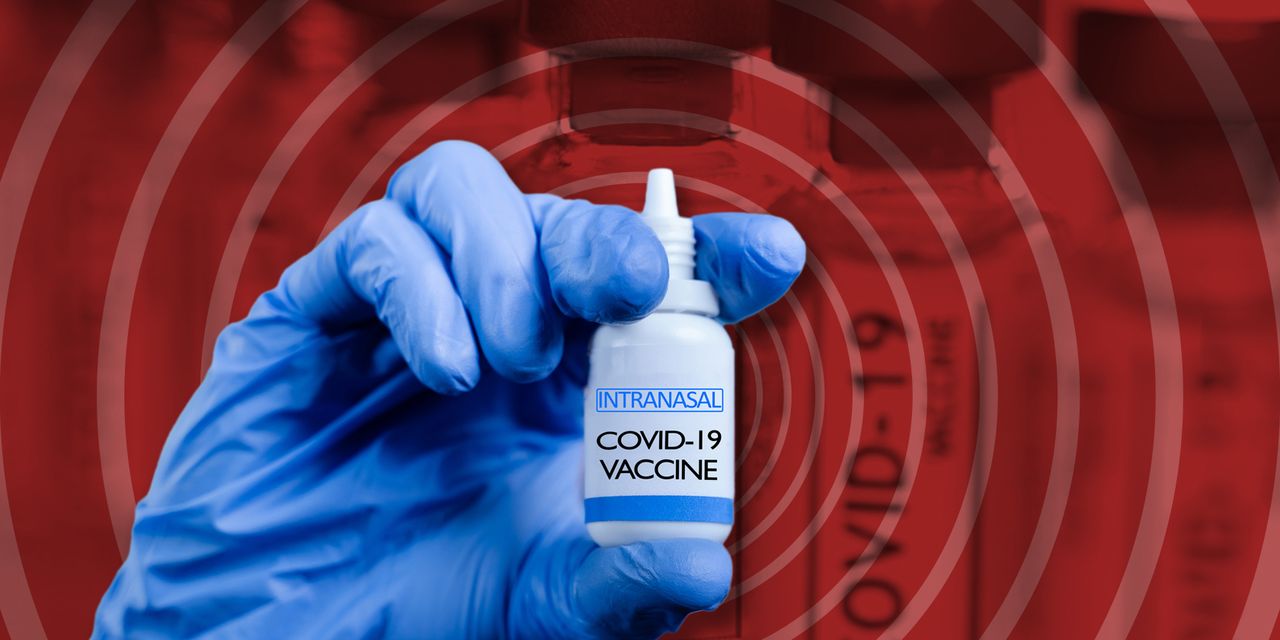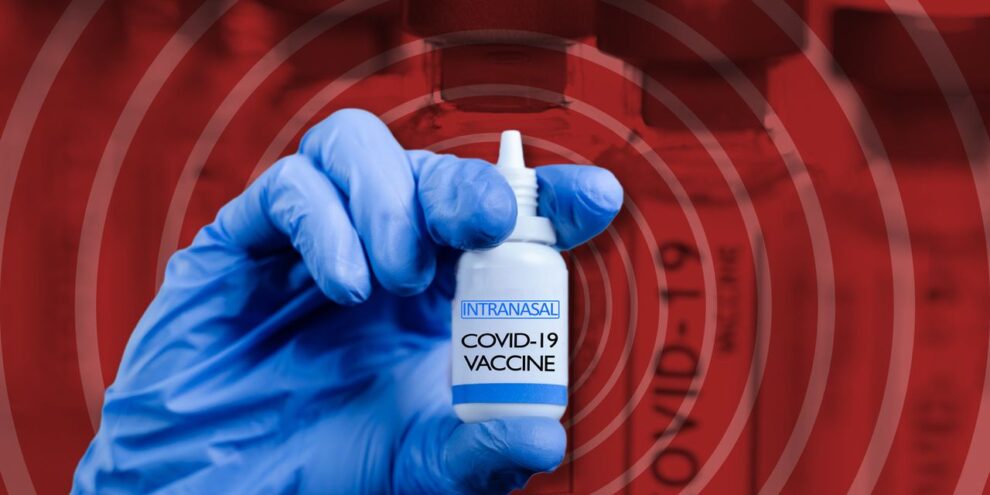
For many, one of the defining moments of the COVID-19 pandemic was when they learned that the mRNA vaccines developed by Moderna MRNA, +1.46% and by BioNTech BNTX, +1.55% and Pfizer PFE, +0.22% worked.
Then came the first wave of breakthrough infections in mid-2021 and the gradual understanding, both in scientific circles and among the general public, that the vaccines are far less powerful protectors against infection than we initially thought — even though they do a pretty great job at preventing severe disease.
One way to address the infection paradox is by improving mucosal immunity, either by an intranasal vaccine — one that is inhaled through the nose — or other methods. Mucosal immunity aims to offer protection at the site of infection — in this case, the mucous membranes of the nose — along with the systemic immunity offered by an injected vaccine.
Some countries are already using vaccines that target mucosal immunity, including China, which began rolling out an inhaled COVID vaccine developed by CanSino Biologics 688185, -1.43% last fall, and India, which made Bharat Biotech’s nose drops available in January as a primary or booster dose. Iran and Russia reportedly have nasal vaccines, as well.
No intranasal vaccines have been authorized or approved in the U.S., although there are several in development, including Blue Lake Biotechnology’s experimental vaccine, which produced promising data from a Phase 1 clinical trial, and Codegenix’s candidate, which is in Phase 3 clinical trials. Both companies are privately held.
MarketWatch talked to Dr. Joachim Hombach, executive secretary of the World Health Organization’s Strategic Advisory Group of Experts on Immunization, to talk about intranasal vaccines and what they could bring to the table three years into the pandemic.
MarketWatch: What are the benefits of a nasal vaccine for COVID?
Hombach: An intranasal administration may be more convenient than an injection and parenteral [non-oral] administration. That’s number one. Number two is that we expect from a nasal vaccine — because the antigen is administered to the mucosa — that we induce mucosal immunity, and our expectation from mucosal immunity is that it does a better job in terms of preventing infection, which in turn would reduce transmission intensity.
MarketWatch: What are the challenges in developing a nasal vaccine?
Hombach: We have a couple of mucosal vaccines, which actually also include those that are already administered, like oral polio [vaccine]. But they’re not targeted directly at the respiratory tract. The best known intranasal vaccine is an influenza vaccine — [AstraZeneca’s AZN, -0.02% ] FluMist — which has relatively limited indication but shows that it works in kids better than a classical vaccine, but not in adults or older adults.
The challenge of developing a nasal vaccine is essentially how to evaluate it. You’re assessing the impact on transmission. You can assess infection reduction, yes, but you will also want to really quantify the impact on transmission, and this takes more complicated studies.
The other problem that we have is on the immunological side. Specifically, in the context of COVID, we have a fair understanding of the relationship between protection against more severe disease and the level of neutralizing antibodies in the bloodstream. This is also the way now the vaccines are being licensed. They’re being licensed on the basis of immunological parameters. We do not have these immunological parameters for mucosal immunity. We cannot really quantify it. How COVID vaccines today are brought to the market poses a substantive challenge.
MarketWatch: So what we’re actually talking about are the endpoints for the clinical trials and the benchmarks for authorization, approval or licensing.
Hombach: Exactly. In some countries, intranasal vaccines have been licensed. They have been licensed on the basis of neutralizing antibodies in the bloodstream. So they’ve been based on the criteria that are being used for the classically administered vaccines, which also means that their performance is in relation to the usual clinical endpoints that we assess with the other vaccines but not in relation to the things we are interested in.
MarketWatch: Is it the responsibility of the regulators in different countries or within your organization to set out new benchmarks for intranasal-vaccine development?
Hombach: I cannot really speak for the regulators, but my understanding is that’s not the case. We will be going with the criteria that we have, but the value-add needs to be studied subsequently in some type of effectiveness studies. We’d like to have this for any vaccine. But we would also like to have it for nasal vaccines. And the data for licensure will not provide this information.
MarketWatch: In the U.S., we’ve seen many stories about how we need another Operation Warp Speed [the federal program that spurred the development of the currently available COVID vaccines] to bring better vaccines to market. Is there an appetite to fund or support the development of a new generation of shots given the endemic phase of the pandemic that we’re in right now?
Hombach: Whether there is an appetite, I don’t know. But whether there is a medical or public-health need, then the answer is clearly yes. We would love it if there were more investments into these vaccines. We have vaccines that work pretty well in relation to severe disease, but they also have limitations. They have limitations in terms of infection prevention, but they have also limitations in terms of durability of immune response and the breadth of immune response.
Whether an intranasal vaccine would provide an advantage here is a completely different discussion. We need innovation in relation to COVID vaccines, and mucosal immunity is one of the key innovations brought up. There’s broader-spectrum protection, which probably goes hand in hand with more durable protection, because the waning comes very often from the new variants. The other thing is mucosal immunity so that we can also dampen transmission.
MarketWatch: What do you think people still need to understand about the vaccines? Are there still challenging messages to get across?
Hombach: What for us is a concern is that we have further and further limitation of one technology, which is the mRNA technology, which is working great. But it is just one, and it’s in the hands of very few manufacturers. There have been other technologies that have been successfully used. In the marketplace we have now, they are being kind of pushed aside. This comes primarily from the notion of updating the composition of vaccines, which goes fast with mRNA. This is the principal advantage of mRNA. It takes more time for the other platforms. We have a potentially dangerous narrowing to one technology, and this is probably not good for innovation.
MarketWatch: What should people be thinking about in terms of vaccines over the next year of our lives?
Hombach: While we are moving toward endemicity, the big question is: What will be the rhythm of vaccination in the future? What will be the principal target groups of vaccination [i.e, how many boosters will we need, or which high-risk groups of people will need an extra booster]?
We need to acknowledge that, for the time being, we are not in a position to provide a definitive answer. But again, coming back to the initial question, if we had mucosal vaccines at large scale, which would indeed allow reduced transmission, the likelihood of a permanent or a constant flow of new variants would probably come down.
This Q&A has been edited for clarity and length.






